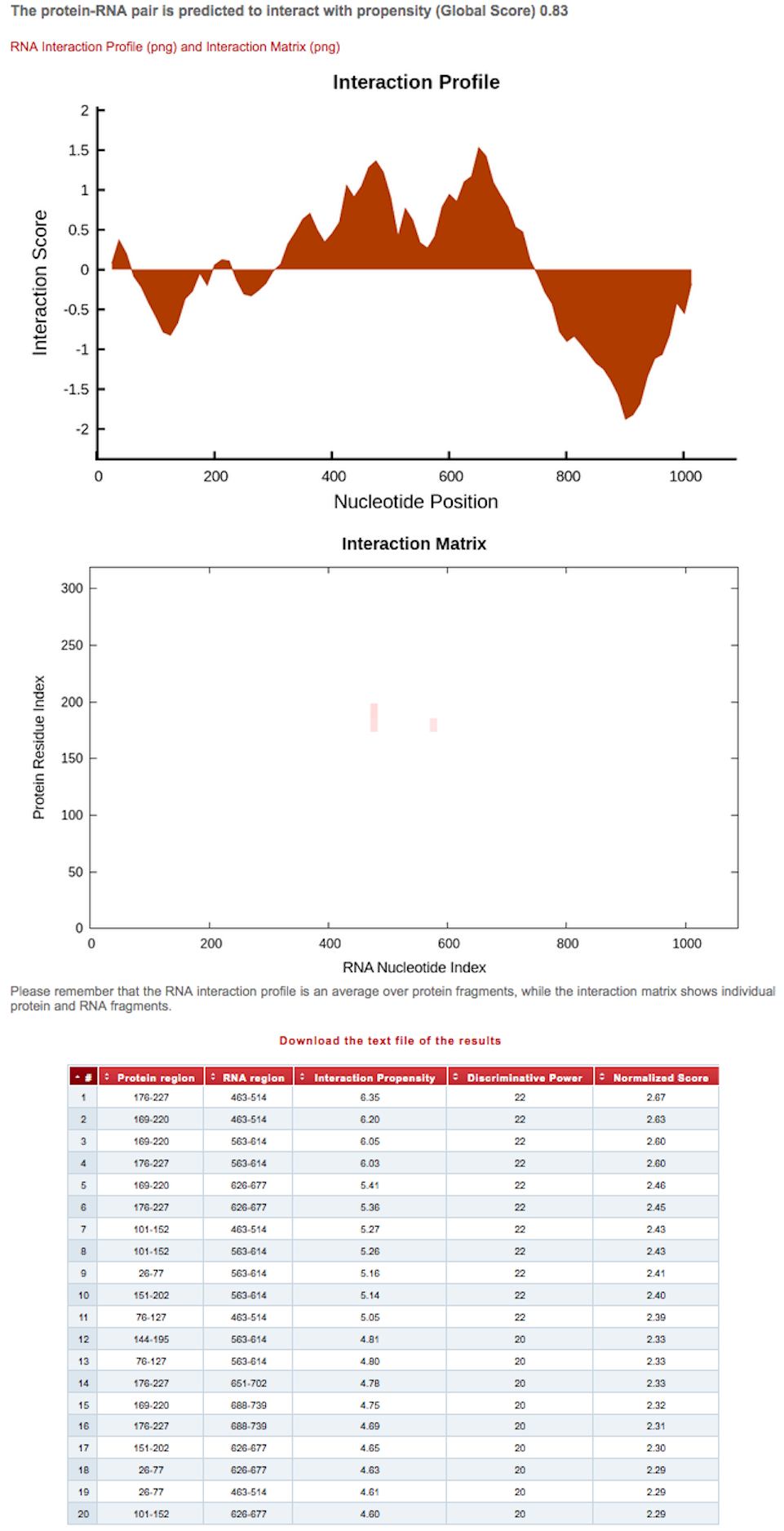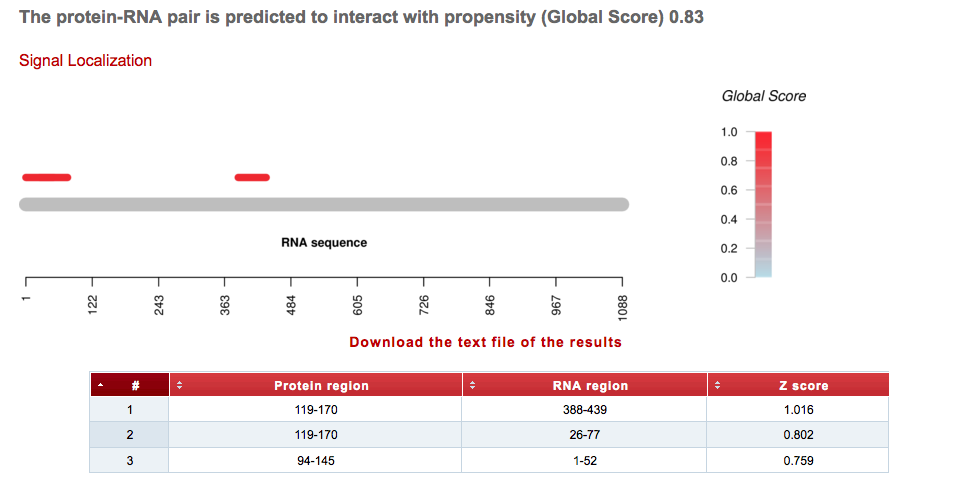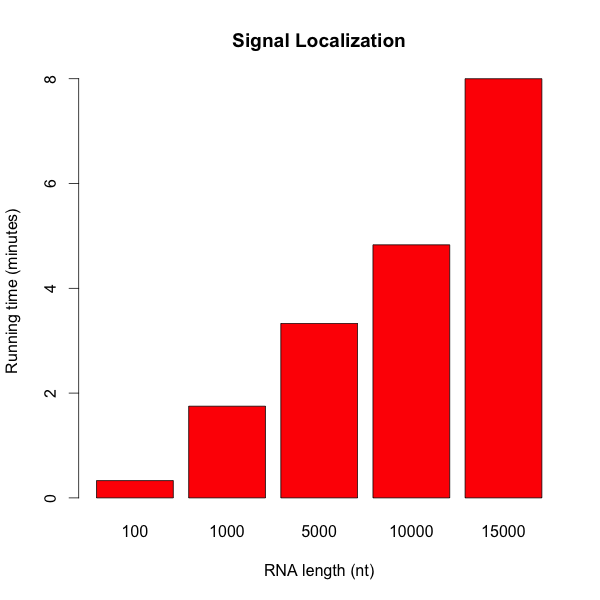
Global Score
Global score is a method to integrate the signal coming from the binding propensities of individual fragments into a variable called Global Score that predicts the overall interaction ability of a protein-RNA pair. The introduction of Global Score allows us to compute interactions with RNAs larger than 1000 nucleotides, thus extending the general applicability of catRAPID method. In the method, the interaction propensities of individual fragments are summed up into an overall score considering their statistical distribution.
The server generates automatically a unique reference number for the submission. The user can optionally choose a custom submission label and provide an email address to receive the notification of job completion (optional). Once the sequences of one protein and one RNA (FASTA format) are provided, Global Score allows the user to perform two different types of analysis: calculating the Global Score associated to the sequence pair, or computing the Signal Localization of the interaction.
The first option (Global Score) is available for two types of sequences fragmentations: Uniform and Weighted (Cirillo et al. 2014). By using the Uniform fragmentation, the algorithm will automatically divide protein and RNA sequences into a number of fragments of fixed length without any length restriction. By using the Weighted fragmentation, the size restriction applies to the protein (i.e.: 50-750aa) but not to the transcript. In this case the protein will be used as a whole and its interaction propensity calculated against the most stable local structures of the RNA. In both cases, the interaction propensity is calculated between each protein-RNA fragments. Please see here for a description of the difference between the two types of sequence fragmentation.

By clicking the “Submit query” button, the job is submitted to the computation queue and the user can load the output page that is refreshed every 10 seconds. The user can bookmark the output page and check later the results.
Scoring Options
The output of the Global Score option consists of a statemant about the Global Score value, two plots and a table. The Interaction Profile (or raw profile) represents the interaction score of the protein along the RNA sequence computed with catRAPID fragments (Cirillo et al. 2014). The Interaction Matrix shows, as a heat-map, the protein and RNA regions predicted to interact. The shades of red of the heat-map indicate the Interaction Score of the individual amino acid and nucleotide pairs. Finally, the result table summarizes the top 20 interactions, reporting the coordinates of both protein and RNA fragments that have been employed in the analysis, their interaction propensity, the discriminative power of each interaction and the normalized score used for the graphical representations. For a detailed explanation of the interaction score and the discriminative power, check the catRAPID documentation page.

The output of the Signal Localization option consists of a statemant about the Global Score value, one plot and a table. The Signal Localization plot represents the localization of the signal along the RNA sequence colored according to the Global Score value. To localise high-confidence binding sites, we calculate the coordinates of the highest-scoring regions (top 2%) and filter out fragments falling outside the resolution of our approach (average distance > 5 times the size of the RNA fragment). The Z-score is calculated by normalising the interaction propensity with respect to its average value on a pool of RNA-binding proteins and the relative standard deviation.

Please note that running times increase with RNA length and are quite different bewteen Global Score and Signal Localization options.

Test Cases
In addition to the examples reported in the submission page, we provide the following additional cases:
Signal Localization calculation of an interacting protein-RNA pair, hnrnpK - Xist.
Signal Localization calculation of a non-interacting protein-RNA pair, hnrnpK - U1.
Global Score calculation of an interacting protein-RNA pair, Myc mRNA - FUS. (Siprashvili et al. 2012)
Global Score calculation of a non-interacting protein-RNA pair, Bcl2 mRNA - beta-galactoside alpha-2,3-sialyltransferase 3. (Siprashvili et al. 2012)